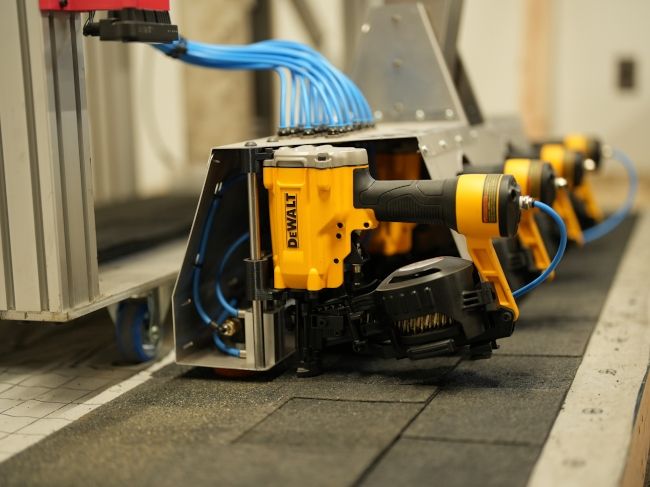Researchers at the University at Buffalo have uncovered an unexpected potential ally in the battle against deepfakes: the very same AI language models that have raised concerns about misinformation.
Led by Siwei Lyu, Ph.D., SUNY Empire Innovation Professor in the Department of Computer Science and Engineering, a team of researchers has explored the capability of large language models (LLMs) like OpenAI's ChatGPT and Google's Gemini to detect deepfake images of human faces. Their findings, presented at the IEEE/CVF Conference on Computer Vision & Pattern Recognition and published on the arXiv preprint server, suggest a promising new direction in the ongoing efforts to combat digital deception.
The Unexpected Potential of Language Models
While LLMs like ChatGPT were not originally designed or trained for deepfake detection, their semantic knowledge and natural language processing capabilities make them uniquely suited for this task. Unlike traditional deepfake detection algorithms that rely on signal-level statistical differences, LLMs approach the problem from a more human-like perspective.
"What sets LLMs apart from existing detection methods is the ability to explain their findings in a way that's comprehensible to humans, like identifying an incorrect shadow or a mismatched pair of earrings," explains Lyu. This ability to provide clear, understandable explanations for their decisions could make LLMs a more practical and user-friendly tool for deepfake detection in the future.
The Study and Its Findings
The research team tested GPT-4 with vision (GPT-4V) and Gemini 1.0 on thousands of images containing both real and AI-generated faces. The models were tasked with identifying potential signs of manipulation or synthetic artifacts.
The results were intriguing. ChatGPT demonstrated an accuracy rate of 79.5% in detecting synthetic artifacts in images generated by latent diffusion, and 77.2% for StyleGAN-generated images. While these figures fall short of the accuracy rates achieved by state-of-the-art deepfake detection algorithms (which boast rates in the mid- to high-90s), they are comparable to earlier detection methods.
More importantly, ChatGPT's ability to explain its decision-making process in plain language sets it apart from traditional algorithms. When presented with an AI-generated photo of a man with glasses, for instance, the model correctly pointed out specific anomalies such as blurred hair and abrupt transitions between the subject and the background.
The Power of Semantic Knowledge
The key to LLMs' potential in deepfake detection lies in their semantic knowledge. Unlike traditional algorithms that are trained on labeled datasets of real and fake images, LLMs possess a form of common sense understanding about the world, including typical features of human faces and the characteristics of real photographs.
Shan Jai, assistant lab director in the UB Media Forensic Lab and first author of the study, explains this concept: "Humans do this as well. Whether it be a stop sign or a viral meme, we constantly assign a semantic description to images. In this way, images become their own language."
This semantic approach allows LLMs to make inferences about what should be present in a real image of a human face, such as symmetry and the presence of two eyes. This deeper connection between visual and verbal concepts gives LLMs a unique advantage in identifying inconsistencies that might indicate a deepfake.
Challenges and Limitations
Despite their promise, the study also revealed several limitations in using LLMs for deepfake detection. Their performance currently lags behind the latest specialized algorithms, partly because LLMs cannot detect signal-level statistical differences that are invisible to the human eye but often crucial in identifying AI-generated images.
Additionally, the researchers found that LLMs sometimes refused to analyze images or provided nonsensical explanations. ChatGPT, for instance, often replied with "Sorry, I can't assist with that request" when asked directly if a photo was AI-generated. This reluctance is likely due to the model's programming to avoid responses when it doesn't reach a certain confidence level.
The Road Ahead
While the current performance of LLMs in deepfake detection may not yet match specialized algorithms, the potential for improvement is significant. Lyu and his team believe that with proper prompt engineering and fine-tuning, LLMs could become powerful tools in the fight against digital deception.
"We expect to see more efforts toward this application," says Lyu. "The next step is going one level down and actually fine-tuning LLMs for this task specifically."
As AI-generated content continues to proliferate, the need for effective, user-friendly detection tools becomes increasingly critical. The unexpected capabilities of LLMs in this area offer a glimmer of hope that AI itself might provide part of the solution to the very problems it has created.
This research not only opens new avenues for combating deepfakes but also highlights the importance of interdisciplinary approaches in addressing the complex challenges posed by advancing AI technologies. As we move forward, the collaboration between human expertise and AI capabilities may prove to be our most potent weapon in maintaining the integrity of digital information.


















